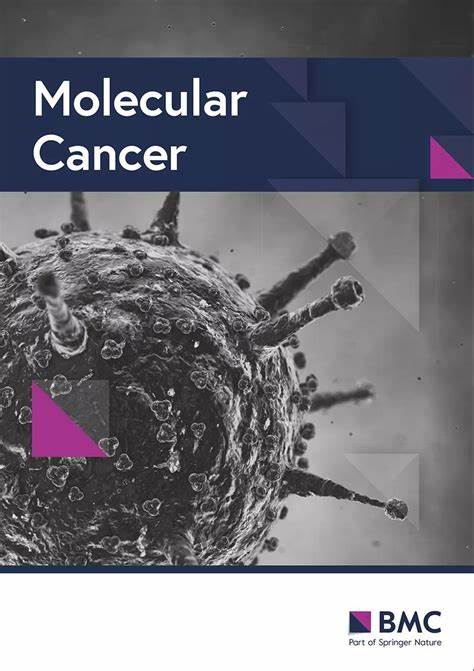Decoding the ubiquitin network: molecular mechanisms and therapeutic vulnerabilities for precision radio-sensitization in cancer
IF 33.9
1区 医学
Q1 BIOCHEMISTRY & MOLECULAR BIOLOGY
引用次数: 0
Abstract
Radiotherapy resistance remains a major clinical challenge, largely driven by tumors’ ability to dynamically adapt through complex molecular networks. Critically, the ubiquitin system has emerged as a critical regulator of this resistance. This review examines how the ubiquitin system orchestrates radiotherapy resistance through spatiotemporal control of DNA repair fidelity, metabolic reprogramming, and immune evasion. We explore how the ubiquitin code, defined by its chain topology diversity (such as K48-linked proteolysis versus K63-mediated signaling) and crosstalk with phosphorylation, SUMOylation, and acetylation, generates diverse resistance mechanisms. These mechanisms, however, also present vulnerabilities exploitable for radio-sensitization. Notably, monoubiquitylation of both histone and non-histone protein collaboratively modulates chromatin dynamics and DNA damage responses to maintain genome integrity during radiation. Furthermore, ubiquitination critically regulates caner metabolism, reprogramming processes such as ferroptosis susceptibility, hypoxia adaptation, and nutrient flux, thereby creating targetable vulnerabilities for radio-sensitization. While targeting key E3 ligases and deubiquitinases (DUBs) shows preclinical promise, clinical translation faces obstacles including functional redundancy, unintended on-target toxicity, and adaptive tumor responses. Distinct from other post-translational modifications (PTMs), the ubiquitin system offers unique clinical advantages: its dynamic reversibility, chain topology diversity, and recent breakthroughs in targeted degradation (e.g., PROTACs) enable precise disruption of radioresistance networks. By integrating these mechanistic insights with biomarker-guided therapeutic strategies, ubiquitin-targeting agents are emerging as fundamental components of next-generation radiotherapy protocols.解码泛素网络:癌症精确放射增敏的分子机制和治疗脆弱性
放疗耐药仍然是一个主要的临床挑战,主要是由肿瘤通过复杂分子网络动态适应的能力驱动的。关键的是,泛素系统已经成为这种耐药性的关键调节器。本文综述了泛素系统如何通过DNA修复保真度、代谢重编程和免疫逃避的时空控制来协调放疗抵抗。我们探讨了泛素编码如何通过其链拓扑多样性(如k48连接的蛋白水解与k63介导的信号传导)和与磷酸化、sumo酰化和乙酰化的串扰来产生不同的抗性机制。然而,这些机制也存在可用于无线电致敏的漏洞。值得注意的是,组蛋白和非组蛋白的单泛素化共同调节染色质动力学和DNA损伤反应,以维持辐射期间基因组的完整性。此外,泛素化对癌症代谢、重编程过程(如铁中毒易感性、缺氧适应和营养通量)起到关键调节作用,从而为放射性致敏创造了可靶向的脆弱性。虽然靶向关键的E3连接酶和去泛素酶(dub)显示出临床前的希望,但临床翻译面临着包括功能冗余、意外靶向毒性和适应性肿瘤反应在内的障碍。与其他翻译后修饰(PTMs)不同,泛素系统具有独特的临床优势:其动态可逆性、链拓扑多样性以及最近在靶向降解(例如PROTACs)方面的突破能够精确破坏辐射耐药网络。通过将这些机制与生物标志物引导的治疗策略相结合,泛素靶向药物正在成为下一代放射治疗方案的基本组成部分。
本文章由计算机程序翻译,如有差异,请以英文原文为准。
求助全文
约1分钟内获得全文
求助全文
来源期刊

Molecular Cancer
医学-生化与分子生物学
CiteScore
54.90
自引率
2.70%
发文量
224
审稿时长
2 months
期刊介绍:
Molecular Cancer is a platform that encourages the exchange of ideas and discoveries in the field of cancer research, particularly focusing on the molecular aspects. Our goal is to facilitate discussions and provide insights into various areas of cancer and related biomedical science. We welcome articles from basic, translational, and clinical research that contribute to the advancement of understanding, prevention, diagnosis, and treatment of cancer.
The scope of topics covered in Molecular Cancer is diverse and inclusive. These include, but are not limited to, cell and tumor biology, angiogenesis, utilizing animal models, understanding metastasis, exploring cancer antigens and the immune response, investigating cellular signaling and molecular biology, examining epidemiology, genetic and molecular profiling of cancer, identifying molecular targets, studying cancer stem cells, exploring DNA damage and repair mechanisms, analyzing cell cycle regulation, investigating apoptosis, exploring molecular virology, and evaluating vaccine and antibody-based cancer therapies.
Molecular Cancer serves as an important platform for sharing exciting discoveries in cancer-related research. It offers an unparalleled opportunity to communicate information to both specialists and the general public. The online presence of Molecular Cancer enables immediate publication of accepted articles and facilitates the presentation of large datasets and supplementary information. This ensures that new research is efficiently and rapidly disseminated to the scientific community.
 求助内容:
求助内容: 应助结果提醒方式:
应助结果提醒方式:


